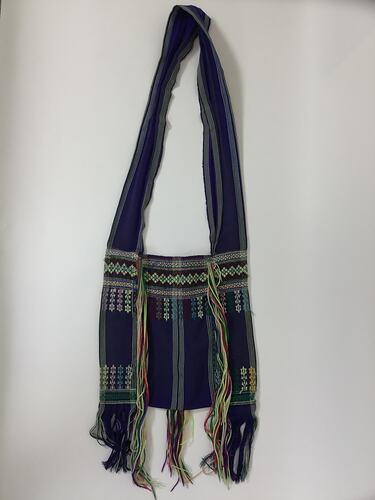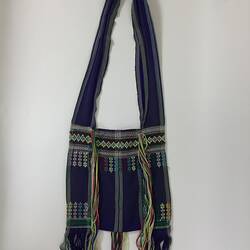Summary
Paw Moo and Daw Na Baw Kaw Paw arrived from Thailand with three of their four children in Melbourne as Karen refugees in 2007 and 2009 and resettled in Werribee.
Daw Na's family lived with his family in Bawjota village, about one day's walk north of the Burma-Thai border. The Baw Kaw Paw family consists of father Daw Na, mother Paw Moo, and children Kying-May (girl), Le-Ka-Paw (boy), Thinja-Paw (girl) and Sein-Kyi-aye (boy). They are of Karen ethnicity, one of a number of minority ethnic groups in Myanmar (Burma). Daw Na was born in 1950, Paw Moo in 1955.
Burmese military activity meant that remaining in the village had become impossible. Particularly during summer, soldiers would come to the villages, take food and also people themselves to act as potters (carriers). Usually they would take men, but women also if necessary.
Daughter Kying-May left the village first in 1999 when she was 17 years old; the rest of the family followed in 2000. They were reunited in the Mae-La refugee camp the largest refugee camp in Thailand just over the Thai-Burma border (with an average of around 40,000 residents). The majority of the refugees were Karen but there were also some other Burmese ethnic groups (such as Shan and Arkanese), as well as Muslims and Rohingya.
The family stayed there for seven years and had been unable to bring any belonging with them aside from a few clothes. Life in the camp was very basic. They received monthly food rations from the NGOs as well as some cooking equipment, but they were not allowed to leave the camp to get work and earn a living. There was a school at the camp for the children. Housing was built by the refugees, huts made from bamboo (walls and floors) and roofs from leaves. The Baw Kaw Paw family built their own hut.
The women wove traditional clothing from simple looms made in the camp and these skills were passed down from mothers to daughters. Paw Moo taught her daughters how to weave and she still practises this skill today at the Wyndham Community Centre with other Karen women.
The family arrived in Australia in 2007, the application process having commenced around 2005 by the UNHCR in Thailand. People were asked where they would like to resettle (Australia, Canada, the USA) and the Baw Kaw Paw family chose Australia because they had a friend who had already migrated to Australia and communicated that it was better here than in other countries (the friend had settled in Nhill, NSW). In the camp they were interviewed first by UN officials, then Australian Department of Immigration officials. They received health checks by the International Organisation for Migration (IOM) and were then transported to Mae-Sot, the nearest town, for five weeks where they had more health checks. They then travelled to Bangkok in a bus and caught a plane to Melbourne via Sydney (which all took about a week).
In 2007 only the parents and youngest child came, the three being registered as one household with the UNHCR. Two more children followed in 2009. Their third eldest child, daughter Thinja-Paw, still lives in the refugee camp. She is married with a child and complicated family reasons there are preventing her from coming, although her family are continuing to try to secure her relocation. The family first arrived in St Albans in a temporary accommodation house run by AMES for newly arrived refugees. They stayed there for two weeks, then moved to Werribee where they lived with a nephew for four months before moving into their own home. Daw Na and Paw Moo took English language classes, and Daw Na then volunteered at the Community Centre. It appears they did not enter paid employment and their English language skills are limited.
Daw Na reflects that he is happy in Australia, he and his family are safe here, and they are part of a large Karen community in Werribee. Paw Moo returned to the camp in 2012 (and again in 2015) to visit her daughter and she stayed there for three months. She made the bag which the family is donating to the Museum, and brought it back to Australia with her. The family are keen to have Karen refugee experiences represented in the Museum.
More Information
-
Keywords
-
Authors
-
Article types

